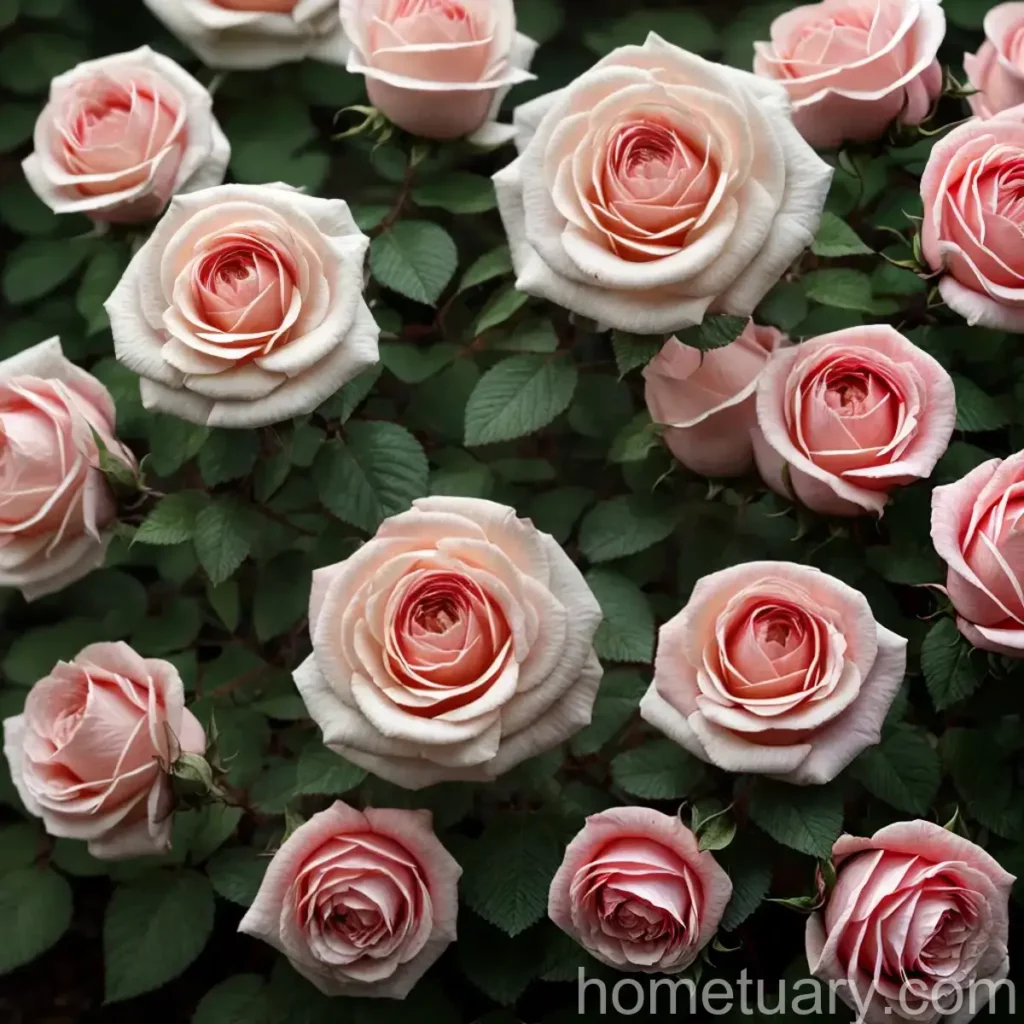Shrub Rose (Rosa ‘Quietness’): A Comprehensive Guide
What is a Shrub Rose?
Shrub roses, also known as landscape roses, are a diverse group of roses that are celebrated for their vigor, hardiness, and ability to thrive in various garden settings. They display a wide range of growth habits and flower forms, making them versatile and adaptable to different landscaping needs.
Key Takeaways – Shrub Rose (Rosa ‘Quietness’)
Culture
- Common Name: Rosa ‘Quietness’
- Type: Shrub Rose
- Characteristics: Fragrant, disease-resistant, long bloom period
- Growth Habit: Upright
- Suitable For: Landscaping, gardens, containers, cut flowers, borders, hedges, attracting wildlife
Uses
- Landscaping: Versatile for various garden settings
- Gardens: Adds beauty and fragrance to outdoor spaces
- Containers: Suitable for growing in pots or containers
- Cut Flowers: Provides blooms for indoor floral arrangements
- Borders: Creates natural and colorful borders
- Hedges: Can be shaped into beautiful, flowering hedges
- Wildlife Attraction: Attracts bees, butterflies, and hummingbirds
Water
- Watering Needs: Regular watering, particularly during dry spells
- Soil Moisture: Well-drained soil to prevent waterlogging
Sunlight
- Sun Exposure: Full sun for at least 6-8 hours a day
- Shade Tolerance: Some varieties can tolerate partial shade
Fertilizer
- Fertilization: Regular feeding with a balanced fertilizer during the growing season
- Nutrient Needs: Nitrogen for foliage growth, phosphorus for flower production, and potassium for overall plant health
Soil
- Soil Type: Well-drained, fertile soil
- pH Level: Slightly acidic to neutral soil pH (6.0-7.0)
- Amendments: Organic matter can improve soil structure and fertility
Pruning
- Pruning Time: Late winter or early spring
- Pruning Goals: Shaping, removing dead or diseased wood, promoting healthy growth and abundant flowering
- Pruning Technique: Regular deadheading for continuous blooms
Propagation
- Propagation Methods: Stem cuttings, layering, and grafting
- Timing: Best results achieved in early summer or late autumn
- Rooting Medium: Well-draining potting mix
Container
- Container Size: Suitable for larger pots or containers
- Drainage: Adequate drainage holes in the container
- Soil Mix: Well-draining potting soil
- Watering: Requires more frequent watering due to faster drying of the soil in containers
- Fertilization: Regular feeding for nutrients in the confined space
Popularity
- Garden Choice: A popular choice for home gardens, public parks, and commercial landscapes
- Decorative Value: Adds beauty, fragrance, and color to outdoor spaces
- Low-Maintenance: Requires relatively low maintenance compared to other garden plants
- Versatility: Adaptable to various garden designs and settings
Common Diseases
- Disease Resistance: Known for high disease resistance
- Disease Susceptibility: Some susceptibility to common rose diseases like powdery mildew and black spot
- Preventive Measures: Adequate air circulation, proper watering, and timely pruning
Disease Diagnosis
- Symptoms: Yellowing leaves, powdery or spotted foliage, wilting, stunted growth
- Diagnosis: Confirmation by garden experts or plant pathologists
- Treatment: Fungicidal sprays, cultural practices to improve plant health
Common Pests
- Pest Resilience: Generally resistant to many common pests
- Pest Challenges: Potential attacks from aphids, thrips, and spider mites
- Control Measures: Natural predators, insecticidal soaps, and horticultural oils
Botanist’s Tips
- Site Selection: Choose a sunny location with well-drained soil for optimal growth and flowering.
- Watering: Maintain consistent soil moisture, especially during the establishment phase and flowering period.
- Pruning: Regular pruning encourages new growth, removes dead wood, and promotes a tidy appearance.
- Fertilization: Provide balanced feeding to support healthy foliage and abundant blooms.
- Disease Management: Monitor for signs of diseases and take preventive measures to maintain plant health.
Fun Facts
- The ‘Quietness’ shrub rose, known for its delicate pink blooms and sweet fragrance, is a captivating addition to any garden.
- Shrub roses, including the ‘Quietness’ variety, offer a wide array of growth habits, colors, and fragrances, making them a favorite among gardeners.
- These roses have been hybridized to exhibit exceptional disease resistance, reducing the need for intensive disease management.
Links to External Resources
- American Rose Society
- Royal Horticultural Society – Roses
- University of California Integrated Pest Management – Roses
- Missouri Botanical Garden – Rosa ‘Quietness’
By delving into the world of shrub roses, particularly the captivating Rosa ‘Quietness’, we discover a wealth of information and insights that can inspire and guide garden enthusiasts in nurturing these remarkable plants. Whether you are drawn to their fragrance, disease resistance, or their suitability for various garden designs, shrub roses, including ‘Quietness’, offer an abundance of beauty and charm to enrich outdoor spaces.















